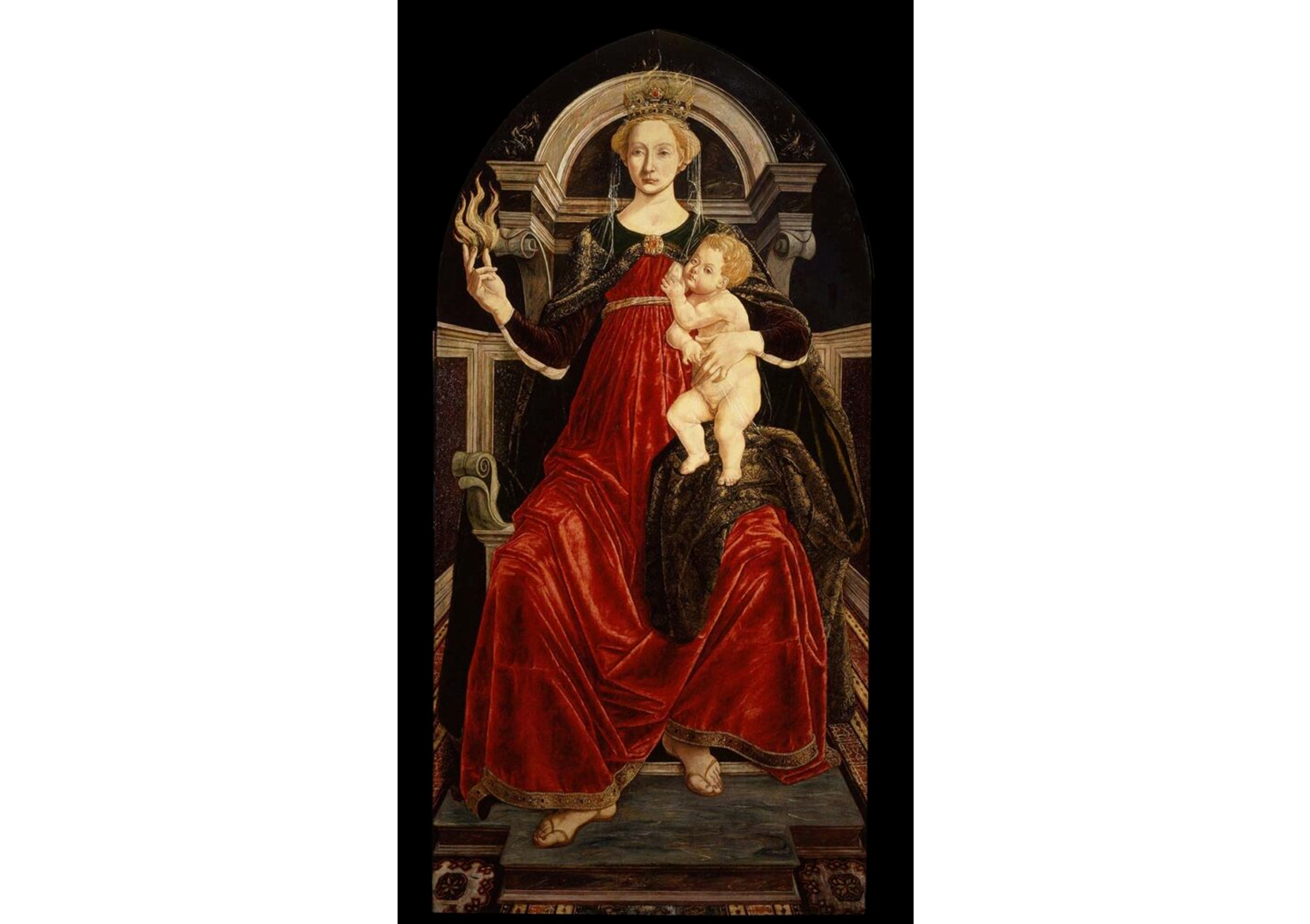+39 0669887260 | info@wucwo.org | Contact us
Art for meditation - March 2024

Piero del Pollaiolo (Florence 1441 - Rome 1496), Charity, 1469-70, tempera grassa on panel, 168 x 90.5 cm, Florence, Uffizi Museum
The Virtues: Charity
This month, leading up to Easter, we examine the third of the theological virtues, Charity. Art historians tell us that this was in fact the first panel of the cycle of virtues painted by Piero del Pollaiolo and that it was presented to the heads of the Tribunale della Mercanzia in order to obtain the work: the proclamation in fact foresaw the execution of seven panels to represent all the virtues, both the "theological" and the "cardinal" ones. The work was liked and so the painter was contracted to execute the other works as well.
Charity, like Faith and Hope, also descends directly from God. Indeed, as St Paul tells us in the First Letter to the Corinthians, “So faith, hope, and love (charity) remain, these three; but the greatest of these is love. (1 Cor 13,13). And, as St John reminds us, 'God is love' (1 John 4,8).
Charity is also depicted by Pollaiolo as a young woman. But this time she is not alone. She has a baby on her lap, which she is breastfeeding: we see her breast, from which the baby has just detached itself. And like Faith, she also carries an 'attribute' in her right hand: a flame, which clearly symbolises the love of God or the fire of the Spirit.
We are struck by the elegance of her dress: the gown is red velvet (red is the colour that traditionally identifies this virtue, but let us also remember that red, in its purple variant, is the colour of emperors and that red is the colour of martyrdom, the supreme example of charity and love for Christ), the cloak is a beautiful golden brocade. Two elements are of great importance in the painting: the direct light, coming from the right, and the folds of the dress; Both of them help to build up the volume, to give consistency to the solid body of the young woman.
Then there are two other elements that I think emphasize the primacy of Charity over the other virtues: the beautiful throne bordered by marble panels that recall Roman classicism, but above all the two jewels she wears, a crown - almost as if to highlight her supremacy with this regal attribute - and the beautiful clasp that closes the mantle on her chest and is embellished in the centre with an enormous ruby, a red stone as red is the dress and as red is precisely the colour that represents the virtue itself.
Finally, we are struck by the direct link that is established, in the typical representation of Charity as a woman nursing a baby from her breast, between the first of the virtues and maternity - and therefore woman - as if to underline the primacy of the feminine when we speak of love and charity: a love that nourishes and gives life, that rejoices and makes us grow.
If I speak in human and angelic tongues 2 but do not have love, I am a resounding gong or a clashing cymbal. And if I have the gift of prophecy and comprehend all mysteries and all knowledge; if I have all faith so as to move mountains but do not have love, I am nothing. If I give away everything I own, and if I hand my body over so that I may boast but do not have love, I gain nothing. Love is patient, love is kind. It is not jealous, (love) is not pompous, it is not inflated, it is not rude, it does not seek its own interests, it is not quick-tempered, it does not brood over injury, it does not rejoice over wrongdoing but rejoices with the truth. It bears all things, believes all things, hopes all things, endures all things. Love never fails. If there are prophecies, they will be brought to nothing; if tongues, they will cease; if knowledge, it will be brought to nothing. For we know partially and we prophesy partially, but when the perfect comes, the partial will pass away. When I was a child, I used to talk as a child, think as a child, reason as a child; when I became a man, I put aside childish things. At present we see indistinctly, as in a mirror, but then face to face. At present I know partially; then I shall know fully, as I am fully known. So faith, hope, love remain, these three; but the greatest of these is love. (1 Cor. 1-13)
(Contribution by Vito Pongolini)